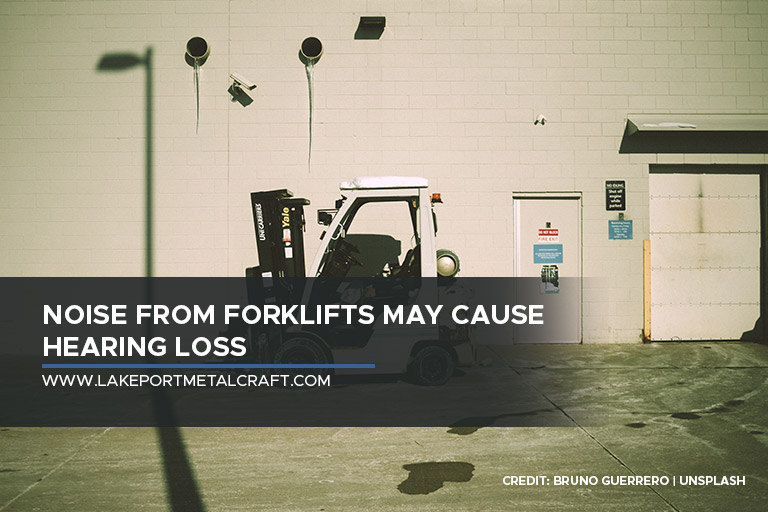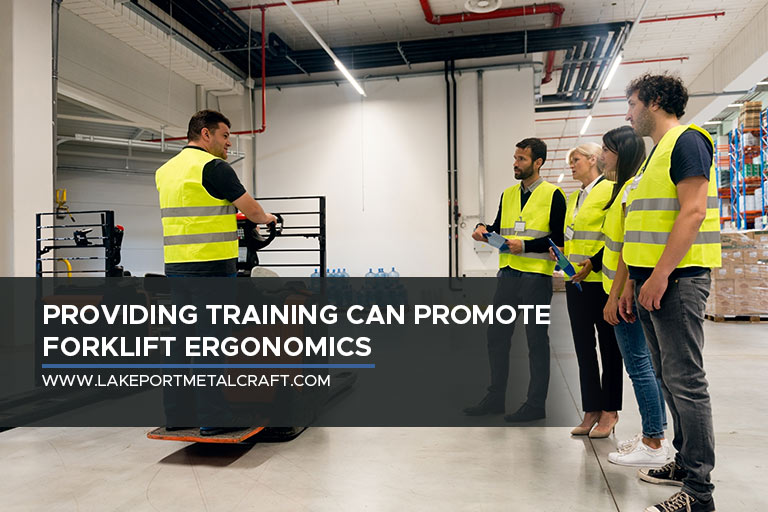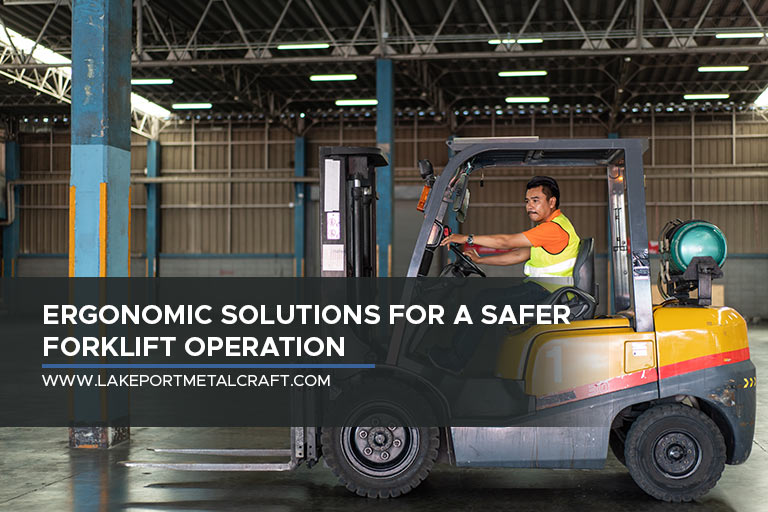Forklifts are essential in many industrial applications, such as manufacturing, construction, and warehousing, where heavy loads must be moved quickly and efficiently. Unfortunately, they are also among the most dangerous equipment to operate, as they can cause accidents and injuries to the operator and anyone nearby. Ergonomics is one of the most effective ways to improve forklift safety and efficiency.
While solutions like installing a stand-up reach truck rear post to protect operators are a priority, employers must also consider ergonomic solutions. This article will discuss ergonomics in forklift operation, common ergonomic issues, and ergonomic solutions for safer forklift operation.
Importance of Ergonomics in Forklift Operation
The science of ergonomics is concerned with designing and arranging workplaces, products, and systems so that workers can be as efficient, comfortable, and safe as possible. Because forklift operators typically spend significant time in the cab, poor ergonomics may lead to discomfort, fatigue, and pain, resulting in operator errors and accident risks.
Ergonomic solutions can prevent musculoskeletal injuries and boost operator productivity by minimizing physical strains and fatigue during forklift operations.
A double-reach forklift allows the operator to pick up and place loads at elevated heights without frequently repositioning the forklift. This reduces the amount of bending, twisting, and reaching required of the operator, which lowers the risk of injuries and improves productivity.
Another key aspect of forklift ergonomics is using a forklift load backrest, a critical safety feature designed to prevent loads from falling backwards onto the operator or others nearby.
Businesses can improve safety, productivity, and profitability by optimizing forklift design and operation to reduce physical strain on the operator. Ergonomics, therefore, not only prevents accidents and injuries but can also help to minimize equipment downtime and maintenance costs. Overall, investing in ergonomics is a wise decision for any facility that relies on forklifts.
Common Ergonomic Issues

Here are some of the most common ergonomic issues faced by forklift operators, impacting their safety and forklift performance:
- Vibration: A forklift can generate significant vibrations, causing fatigue, discomfort, and injuries.
- Awkward and static postures: Operators often have to work in awkward and static postures, such as reaching or twisting, which can cause discomfort and increase the risk of musculoskeletal disorders.
- Uncomfortable seats: Forklift operators have to sit for extended periods, leading to back pain, leg pain, and overall discomfort.
- Excessive noise: Forklifts can be very noisy, causing hearing loss and other health problems. Forklift manufacturers can implement noise-cancelling or hearing protection requirements to minimize noise levels.
Understanding and implementing proper forklift requirements for operation can reduce these ergonomic issues.
7 Ergonomic Tips to Promote Safe and Efficient Forklift Operation

Here are some of the most effective ergonomic solutions for safer and more efficient forklift operation:
-
Choose a low step-in height
A low step-in height is a distance from the ground to the forklift floorboard. It allows the operator to easily step onto the forklift, reducing the risk of losing their balance and falling. This is especially important when the forklift is used in wet or slippery environments, where the risk of slips and falls is higher.
It’s worth noting that not all forklifts have low step-in heights, but there are options. Consider the step-in height when choosing a forklift model, and select one with a low entry point. Forklifts without low step-in heights can have step platforms installed so that entering and exiting them is safer.
-
Reduce forklift vibration
Excessive vibrations from forklifts can lead to fatigue, numbness, and musculoskeletal disorders. One way to reduce vibrations is to choose forklifts with more cushioning, such as solid or pneumatic tires. Another option is to add cushioning to the forklift seat or floor. Regular inspection and replacement of forklift rear tires are also essential for preventing vibration-related injuries.
-
Adjust the seat
Proper seat adjustments can reduce the risk of back and neck pain by promoting proper posture and reducing fatigue. Because different operators have different body sizes and shapes, adjusting the seat to meet their specific requirements is critical. Some forklifts have adjustable seats that can accommodate operator height and weight. This enables the operator to properly position themselves and maintain a comfortable posture throughout the shift.
Forklift seats that are not adjustable or don’t fit the operator’s needs can be supplemented with additional cushions or back supports to increase comfort and promote good posture.
-
Always wear a forklift seat belt
Seat belts help keep operators securely in their seats and reduce the risk of being thrown from the forklift in the event of a collision or rollover. It is essential to ensure the seat belt is in good working order and properly adjusted. A seat belt prevents serious injuries or fatalities in a forklift accident.
-
Reduce awkward and static posture
Forklift operations can be physically demanding and involve repetitive movements and awkward postures. Over time, this can lead to discomfort and injury. Incorporating ergonomic solutions into forklift design can reduce these risks and promote safe and comfortable operations.
Consider the following:
- Adjustable controls: By allowing the operator to adjust the position and angle of the controls, they can maintain a comfortable posture while operating the forklift. This can help reduce awkward postures.
- Angled steering wheels: Forklifts with angled steering wheels reduce the strain on the back and neck caused by twisting and turning the body. This can be especially helpful when navigating tight spaces or making frequent turns.
- Ergonomic handles and non-slip foot pedals: Using ergonomic handles can help reduce awkward wrist and hand positions. Non-slip foot pedals can help reduce slip and fall incidents.
-
Provide training on proper lifting techniques and ergonomic principles
Educating operators on proper lifting techniques can minimize injury risk and enhance performance when operating a rear mount forklift or other lifting devices.
The training could cover various topics, including the proper lifting technique. It could also cover the importance of maintaining good posture during operation and even how to properly park a rear mount forklift. It should also emphasize ergonomic features to optimize operator comfort and reduce fatigue and awkward postures.
-
Perform a pre-operation checklist and safety inspection
A pre-operation checklist and safety inspection are essential for all types of forklifts and their components and attachments, such as extensions, positioners, and rear-mounted forklifts. It can help identify potential ergonomic issues and prevent accidents.
Implementing these ergonomic solutions can reduce discomfort and injuries and increase workplace productivity and efficiency. Training operators in ergonomic practices and ensuring that equipment is designed and maintained to minimize ergonomic issues is also essential. Doing so can promote safer and more efficient forklift operations, benefiting your operators and the bottom line. Remember that ergonomics is not a one-size-fits-all solution and may require a customized approach based on the unique needs of each operator and work environment.
To further safeguard your forklift drivers, make sure to install our reliable forklift rear post, The Backbone, along with these ergonomic solutions. Contact our Lakeport Metalcraft team today to learn how we can help you promote ergonomics in forklift operation with a durable and dependable underride protection system. Call us at 416-587-5809 today.


